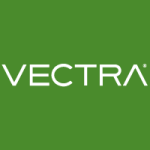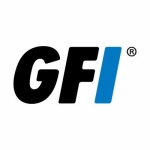What is our primary use case?
In my company, we use Check Point IPS for its intrusion protection functionalities. The product is the core of our security infrastructure that we use to filter and block attempts for connection into resources, which usually you want to happen only for specific administrative roles.
What is most valuable?
The most valuable features of the solution are that the product's stability has been very good. The product's uptime has been massive, and there has not been any downtime, making it a very good product. Our company has had a six-year uptime record with Check Point IPS. The firewall has not caused a single second of outage while functioning to protect access to our data center.
What needs improvement?
Based on what I hear from my full-time firewall administrators, the upgrade process or the maintenance of the devices for each firmware upgrade requires one to break the cluster and run a specific moment at a time, a single node concept. I hear from my admin that the firmware upgrade process is quite cumbersome. Our company has made Check Point very well aware of the cumbersome firmware upgrade process, including the other customers as well. The aforementioned details can be considered for improvement.
The price of the product needs to be improved since it is an expensive solution. All the components of Check Point IPS are expensive, while licenses of the product exceed all its other expenses. If you have a data center without infrastructure, you will suffer from losses on a monthly and yearly basis due to DDoS attacks, which we know about since we have the data for ourselves. It is up to each customer to determine how long he can lose his data center, and then you count if it is possible to lose it for that amount of time, and if you don't, then pay the price for the firewall.
For how long have I used the solution?
I have experience with Check Point IPS.
What do I think about the stability of the solution?
Stability-wise, it is a good solution since we haven't faced any outages in our company.
What do I think about the scalability of the solution?
With MCO solution, Check Point IPS is super scalable since we can spawn virtual firewalls and provide additional CPUs to one particular firewall. Check Point IPS is a SUSE firewall solution where you can launch virtual firewalls within the SUSE, making the product very flexible and versatile.
There are thousands of end users of the solution in my company, which is a major airline company.
My company plans to increase the solution's usage since we have thousands of users.
For the deployment and maintenance, there is a need to provide twenty-four hours and seven days a week coverage. Per cluster, you would need three people for maintenance. If you have twelve nodes split across six clusters, you need six persons and one manager for maintenance.
How are customer service and support?
I have contacted the solution's technical support for solutions like Check Point IPS since it provides two ways to make a change in infrastructure, which you can find in its GUI. If it is not there in the GUI and doesn't work from the moment you need CLI, then you create a technical case to have the vendor watch your actions while you do it, which applies to Cisco controller-based networking. It either works via the GUI, and if it does not, you almost always create a tech case in the case of Cisco or a technical support case in the case of Check Point to have somebody from the technical support assist you. Cisco or Check Point products are no longer meant to be run without support.
How was the initial setup?
The initial setup of Check Point IPS was complex. The nature of the product is such that the setup phase is complex since one needs to insert a firewall into all the connections. One cannot implement a firewall partially since that is completely useless. When one implements Check Point IPS, it is necessary to ensure that all of the traffic goes through it, making the implementation complex, but that's not Check Point's fault since it is the nature of the IT landscape.
The deployment process takes at least three months.
Regarding the deployment process, you install the boxes in a lab environment or a DMZ. In the second step, you upgrade the firmware to the last version you want to have the firewall because you wouldn't want to do that after it has been put in your network. From the moment you have the base setup, you separate the cluster again and distribute it across your data centers, after which you can start activating the firewalls. Basically, what you do is that you install them, cluster them, and in the final stage, you implement or migrate from an existing rule set from another firewall onto the new firewalls. The rule set is super crucial because you cannot start with a blank rule set in a production environment, and you cannot build it up from scratch. Either you get a rule set from somewhere else or build it up manually, which will require massive work.
What about the implementation team?
The implementation process is always done with the help of a third party.
What was our ROI?
If my data center goes down for more than 15 minutes, we lose one million euros in operational costs, meaning our company's return on investment is immediate. If you do not have a firewall infrastructure that protects your data center today, you will suffer outages due to attacks. If you consider one million euros per fifteen minutes, it is clear that my company experiences a clear ROI using the solution.
What's my experience with pricing, setup cost, and licensing?
My company pays for the yearly licensing of Check Point IPS. It is a very expensive tool. Anything that falls under the security-related aspect, including Cisco products, is very expensive.
What other advice do I have?
Our company has been expanding the use of Check Point IPS. We currently have twelve nodes, and we are considering expanding them. We continue to have Check Point IPS in our company, and we even changed from physical devices to virtual devices, including MCO solutions.
Considering how Check Point has evolved as a company, I would definitely recommend the solution to those planning to use it. Now, we are investigating the competitors of Check Point to have a better position when we negotiate prices. We also work with FortiGate in our company. If you look at FortiGate or Check Point, they are the top-line products in the firewall industry at the moment. Check Point is like a top-level provider of firewall solutions.
Overall, I rate the solution a nine out of ten.
Disclosure: My company does not have a business relationship with this vendor other than being a customer.

















